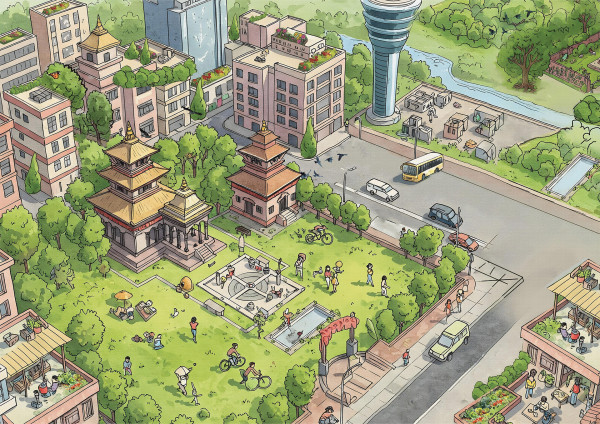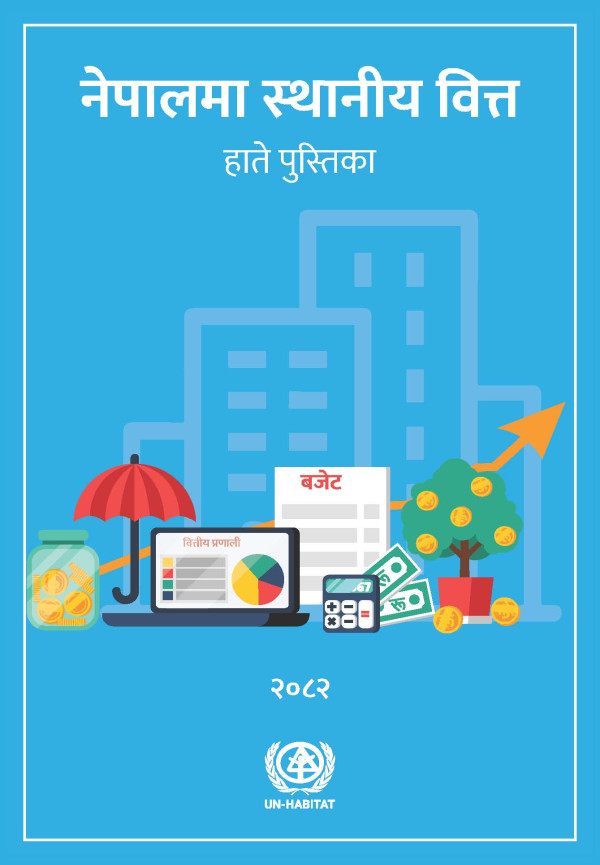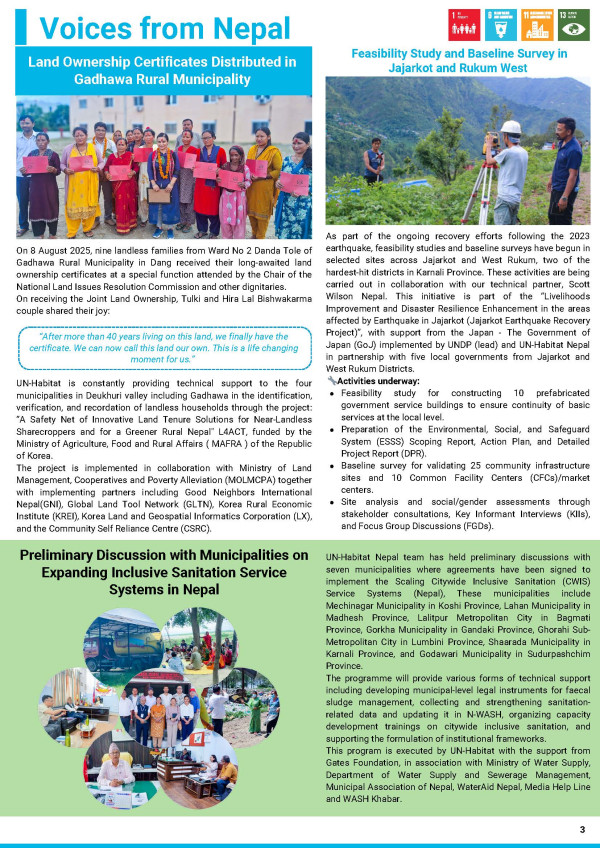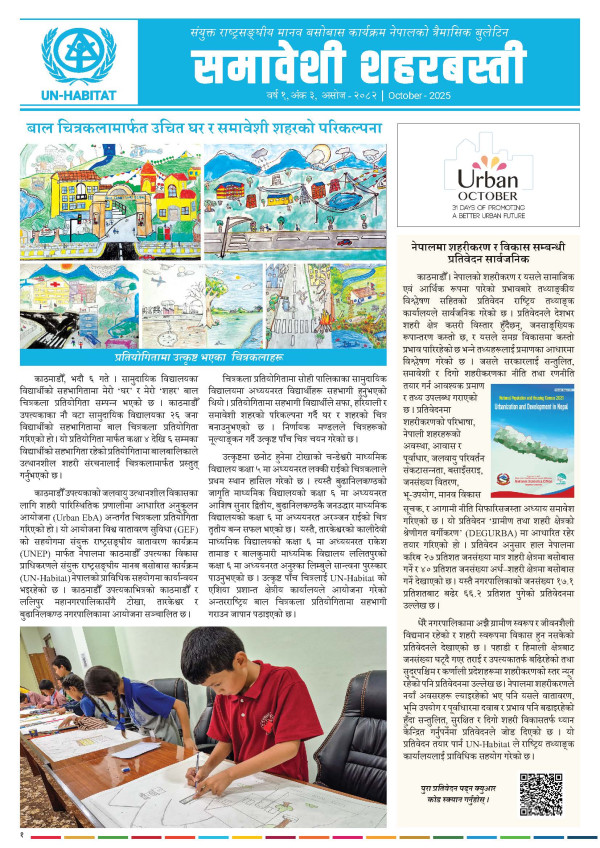NEPAL: Looking to low-tech wastewater treatment

KATHMANDU, 9 February 2012 (IRIN) - In Nepal where one of the biggest childhood killers is water-borne diseases, officials are slowly adopting decentralized ways of treating urban wastewater. There is currently one fully operational central wastewater treatment plant in Kathmandu, a city of an estimated one million. Only 12 percent of Nepal’s urban households nationwide have access to sewer networks - with most pipelines draining directly into a river or one of several non-functioning plants - and only 5 percent of wastewater is properly treated, according to the Kathmandu office of UK-based NGO WaterAid. Decentralized wastewater treatment systems (DEWATS) in Nepal treat small volumes of wastewater close to the source using low-maintenance, often natural technologies, as opposed to energy intensive central plants, which was the only option until 15 years ago when a local NGO first installed DEWATS around Kathmandu. “The users are closer to the facility, so the chances of better management are higher,” said Bhushan Tuladhar, the South Asia regional technical adviser for UN Human Settlements Programme (UN-HABITAT). The system spreads accountability as well as risk, he added. “When there are lots of different plants, in a way you are not putting all your eggs in one basket.” Moving wastewater from the source to treatment accounts for some 80 percent of overall treatment costs, according to experts. Traditional plants typically use technology that requires skilled technicians, often in short supply in places most in need of wastewater treatment. Sewerage and drinking water lines are too closely constructed in Kathmandu, which leads to near instantaneous water contamination in the case of pipe leakage, which is frequent, said Madhav Pahari, UN Children’s Fund’s (UNICEF) water and sanitation specialist in Nepal. Now a proven technology, experts have successfully lobbied for DEWATS in government policies in recent years, arguing it can decrease water contamination and slash deaths by diarrhoea. Pathogens Water and food-borne diseases accounted for almost 13 percent of outpatient visits (65,000) nationwide in 2009-2010, according to the Department of Health. In a recently activeed scientific survey, samples taken from a major river running through Kathmandu were “heavily” contaminated with various pathogens, with some levels rivalling those in untreated water in a treatment plant. With support from the UN, WaterAid and the Asian Development Bank, local NGO Environment and Public Health Organization constructed a community treatment plant in Sunga, 8km southeast of Kathmandu, in 2005 at a cost of US$27,000. “The site on which the treatment plant was constructed used to be very dirty, with a dilapidated school abandoned after a landslide hit it. We would throw our garbage there,” said Krishna Lal Shrestha, chairman of the local water management committee. Since then, wastewater from over 80 households filters through beds of coarse sand, gravel and specialized reed plants before being released into a local river. The plant at Sunga is one of several community based sanitation systems constructed in neighbourhoods in and bordering Kathmandu Valley, which includes the cities of Bhaktapur, Patan and Kathmandu. Implementation of DEWATS in these communities usually requires building household latrines connected to the drainage network. After similar community treatment systems were installed in India, open defecation nearly disappeared, health expenditures for women and children decreased by an average 60 percent and school attendance increased significantly, said Pedro Kraemer, programme coordinator for South Asia at the Germany-headquartered Bremen Overseas Research and Development Association (BORDA). Mainstreaming Some 30 DEWATS have been constructed mostly in and around Kathmandu over the past 15 years with both public and private funding. But without strong local governance, it is still premature to decentralize wastewater management, said Pahari. “The [1999] local self-governance act talks about decentralization of all basic services, but we don’t have any elected bodies.” Following a decade-long civil war, declared officially over in 2006, the government has yet to adopt a new constitution. As a consequence, local elections have not taken place. But Tuladhar from UN-HABITAT said even without locally elected officials, communities can still manage, citing irrigation, education and forestry as examples. “The city needs to accommodate [its] logistics and infrastructure to a new scenario… and to requirements for maintenance... The problem is essentially one of power,” he said, referring to how the national government is reticent on relinquishing control of wastewater management. One of the biggest obstacles thus far to replicating DEWATS may be lack of vision, said the government’s director of a small town water supply project in the Department of Water Supply and Sewerage, Ram Deep Sah. There are at least four different government bodies responsible for wastewater in Kathmandu Valley alone. Nevertheless, the goal is neither wholly centralized nor decentralized wastewater treatment, he added. “We have to go the middle route,” he said, with a combination of centralized treatment in Kathmandu’s most densely populated areas and decentralized options for peri-urban areas, institutions and private companies. Source: IRIN NEWS





